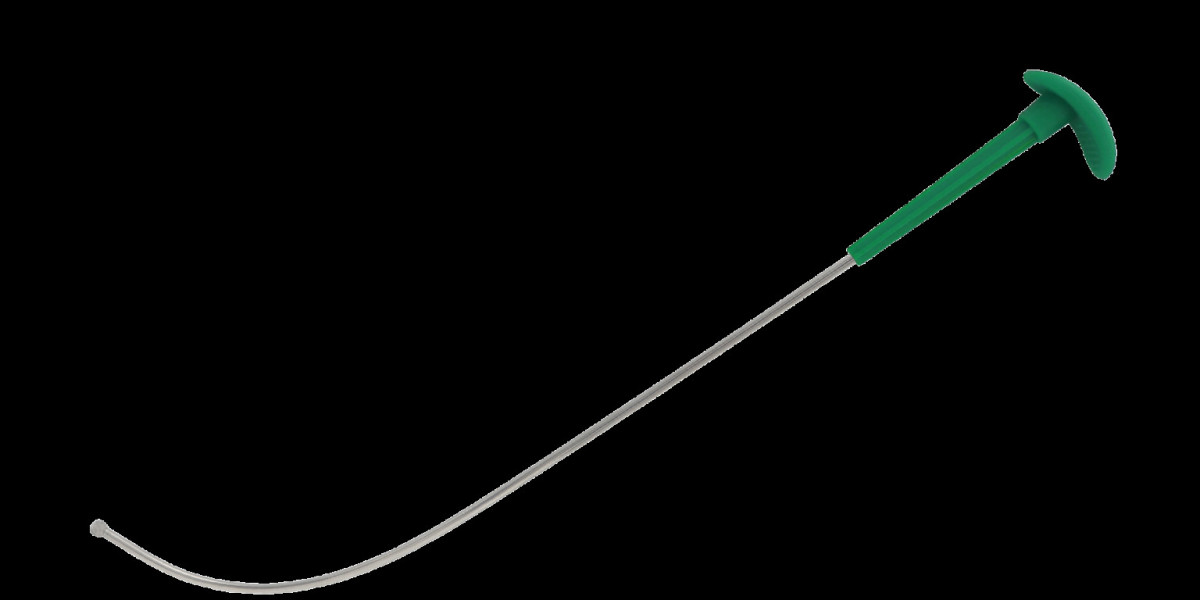In the fast-paced world of healthcare, especially in critical care settings, the need for innovation and improvement in medical tools and techniques is paramount. One such advancement that has revolutionized airway management is the introduction of the single-use intubation stylet. Traditionally, intubation stylets, which help guide the endotracheal tube into a patient's airway during procedures like surgery or emergency intubation, were reusable devices. However, the advent of the single-use intubation stylet has brought significant changes in the way healthcare professionals approach their daily tasks.
Let’s explore why this tool is a true game-changer for healthcare professionals, enhancing safety, efficiency, and overall patient care.
1. Improved Infection Control and Patient Safety:
One of the biggest challenges in healthcare, particularly in the operating room and emergency departments, is minimizing the risk of infections. Reusable intubation stylets, while sterilized after each use, can still present risks if sterilization procedures are not followed precisely. These devices can sometimes harbor pathogens that pose a significant risk of cross-contamination between patients, leading to healthcare-associated infections (HAIs).
Single-use intubation stylets eliminate this risk entirely. They are sterilized and sealed in individual packages, ready to be used once and then disposed of, ensuring that each patient receives a completely clean and uncontaminated device. This dramatic reduction in infection risk plays a crucial role in improving patient outcomes and reducing the potential for post-surgical complications, making single-use stylets a vital tool in infection control.
2. Time-Saving and Efficiency:
Time is often a critical factor when performing procedures such as intubation, particularly in emergency situations. In high-stress environments like the emergency room or intensive care unit (ICU), every second counts. With reusable stylets, healthcare professionals must follow meticulous cleaning and sterilization protocols, which can be time-consuming and prone to human error. Moreover, these processes can cause delays, especially when there are multiple cases or patients waiting.
Single-use intubation stylets are ready to use straight out of the packaging, saving valuable time that would otherwise be spent on cleaning and sterilizing reusable devices. By cutting down the time between intubation attempts and eliminating the need for equipment preparation, healthcare professionals can deliver quicker and more effective care to their patients. The efficiency provided by disposable stylets ensures that healthcare workers can focus more on patient care and less on equipment management.
3. Consistency and Reliability:
Another significant advantage of single-use intubation stylets is the consistent quality they offer. Unlike reusable stylets, which may experience wear and tear over time, disposable stylets are designed to be used only once and then discarded. This means that every time a healthcare professional uses a single-use stylet, they can be confident that the device will perform as intended—clean, intact, and in perfect working condition.
For healthcare professionals, this consistency is vital. Intubation requires precision, and the ability to rely on a tool that functions flawlessly every time helps to ensure that the procedure goes smoothly and successfully. With single-use intubation stylets, medical professionals do not have to worry about the degradation of the device or the potential for malfunctions due to prior use.
4. Cost-Effectiveness for Healthcare Facilities:
While disposable devices are often perceived as more expensive upfront than reusable ones, single-use intubation stylets can actually be more cost-effective in the long run. Healthcare facilities that rely on reusable intubation stylets must invest in cleaning, sterilization, and maintenance equipment. Additionally, staff time is spent cleaning and ensuring the proper functioning of the devices.
In contrast, single-use stylets eliminate these associated costs. There’s no need for cleaning supplies, sterilization processes, or labor dedicated to maintaining the tools. By cutting out these extra steps, healthcare facilities can free up resources to focus on more critical areas of patient care. Additionally, reducing the risk of healthcare-associated infections (and the costs associated with treating those infections) further adds to the long-term savings.
5. Reduced Risk of Cross-Contamination:
In busy hospitals or during high-pressure situations, there’s always the potential for human error. Healthcare workers may inadvertently fail to properly sterilize reusable devices, or the sterilization process itself may not be effective in certain cases. Single-use intubation stylets completely eliminate the risk of cross-contamination caused by improper cleaning or sterilization.
By using a new, sterile device for each procedure, healthcare professionals can be confident that they are not inadvertently transmitting pathogens from one patient to another. This level of precaution helps protect vulnerable patients, particularly those with compromised immune systems, from the dangers of cross-contamination and infection.
6. Convenience for Healthcare Providers:
The simplicity and ease of use that come with single-use intubation stylets are a major benefit for healthcare providers. These devices are pre-formed and ready to use, which significantly reduces the time required to prepare them for a procedure. For busy clinicians, particularly those in emergency or high-volume settings, this level of convenience can be a major advantage.
Moreover, many single-use intubation stylets are designed for ease of disposal. After the procedure, the stylet can be safely discarded without the need for complex cleaning or storage. This streamlined process allows healthcare workers to focus their attention on patient care, rather than worrying about maintaining or storing equipment.
7. Ideal for Emergency and Field Situations:
In emergency situations, such as trauma care or during patient transport, time and convenience are crucial. The single-use nature of these intubation stylets makes them ideal for emergency responders who need to work quickly and efficiently. Disposable intubation stylets are easy to carry, don’t require cleaning between uses, and can be used immediately in the field, allowing healthcare professionals to secure a patient’s airway swiftly and confidently.
Additionally, these devices are lightweight and portable, making them suitable for use in non-hospital settings such as ambulances, helicopter airlifts, or disaster zones. The ability to provide high-quality, sterile airway management equipment in these challenging environments can greatly improve patient survival rates.
8. Regulatory Compliance and Best Practices:
Healthcare systems around the world are governed by strict regulations regarding patient safety, infection control, and medical device usage. Single-use intubation stylets often comply with stringent industry standards, ensuring that healthcare facilities meet regulatory requirements for patient care and infection prevention. These standards can help hospitals and clinics stay compliant with health codes and best practices, reducing the risk of penalties or legal issues while enhancing the quality of care provided.
Conclusion:
The single-use intubation stylet is undeniably a game changer for healthcare professionals. It offers numerous benefits, from improving infection control and patient safety to increasing efficiency and ensuring consistent, reliable performance. Healthcare providers who use disposable intubation stylets can focus more on providing excellent patient care and less on managing equipment, knowing that they have a high-quality, sterile tool at their disposal for every procedure. With its cost-effectiveness, convenience, and ability to reduce cross-contamination risks, the single-use intubation stylet represents a major advancement in modern medicine—one that enhances both the safety of patients and the workflow of healthcare professionals.








